[Dragon 32, Beyond Software]
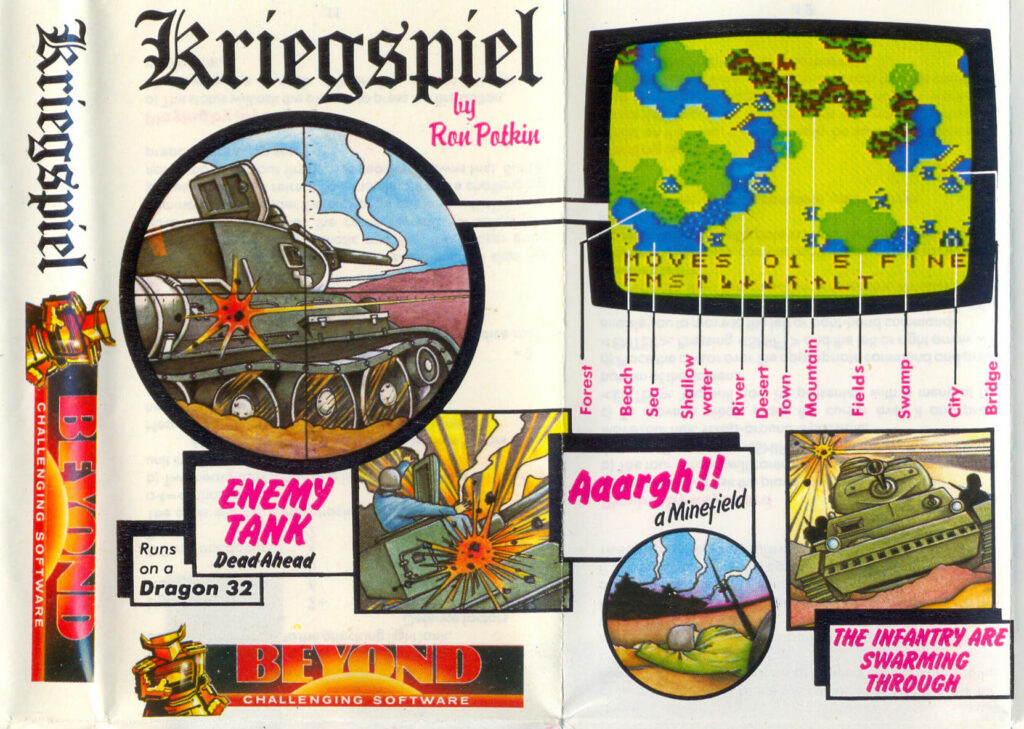
We’re back to Beyond Software, with Ron Potkin’s second Dragon 32 wargame: Kriegspiel – another game I am happy to cover while I slog through SSI’s Breakthrough on the Ardennes.
Kriegspiel reuses the engine of Potkin’s Up Periscope, featuring the same 2×2 screens-map. This time however, it’s ground combat, with a simple objective: occupy the enemy capital.

The AI moves first, and the manual recommends skipping the first turn to leave a fighting chance to the AI. I am happy to oblige, and turn 2 I start to move toward my objectives: the cities on my West and North-West. Controlling more cities than the opponent gives you reinforcement every turn.
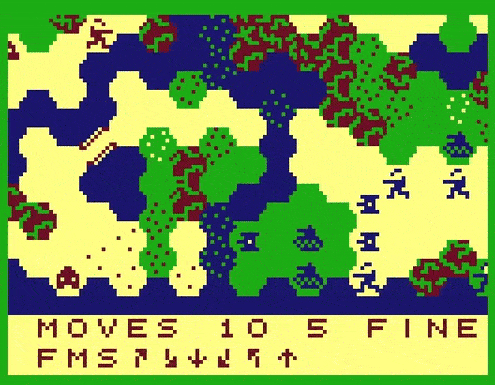
The weather is not on my side as it turns to rain. This halves the movement points of all units and creates chokepoints around the fords I have to cross to reach the cities.
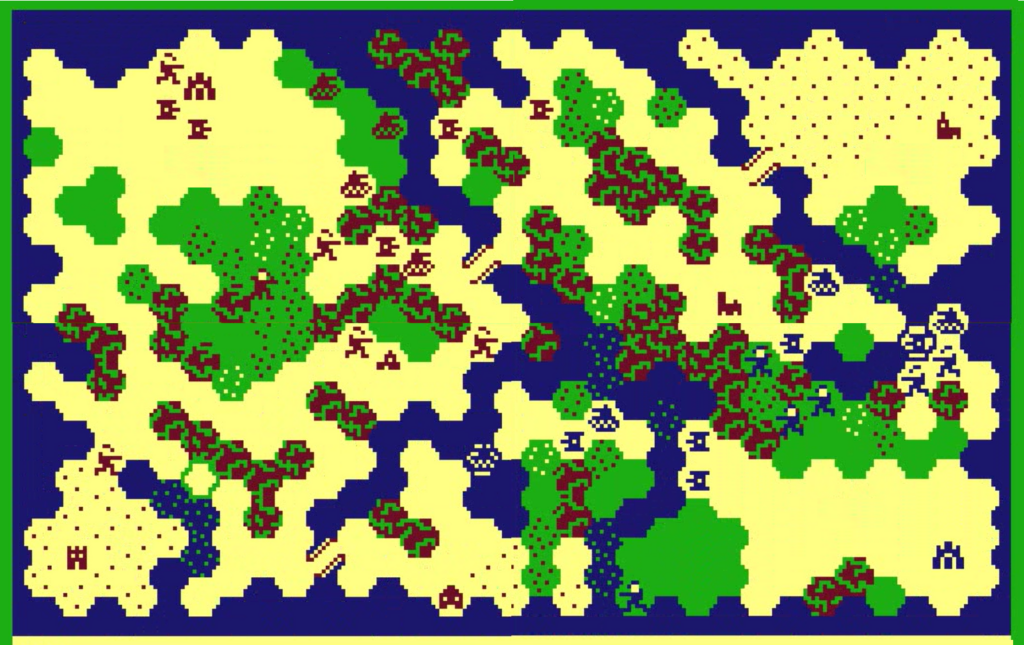
However, the AI is not competent enough to leverage my sluggishness. It moves its pieces in a set order, so the tanks at the front of a column block the others. Even those pieces which can move freely tend to go back and forth rather than decisively move toward the cities. I manage to reach the city on my South-West before my opponent.
The AI is also attacking without checking the odds, and on the following turn it moves its light tank (strength: 2) between my own heavy tank (strength: 3) and my infantry (strength: 1). The light tank is initiating a battle at 1:2 odds, even though the computer has to cope with a massive handicap: its retreats are automatically converted into “elimination”! This horrible decision is mitigated by the best roll the computer could hope for, and the attack ends with an “exchange” result (destruction of both the attacker and the defender). I lose one infantry and the computer loses one tank, so that’s still a good trade for me.
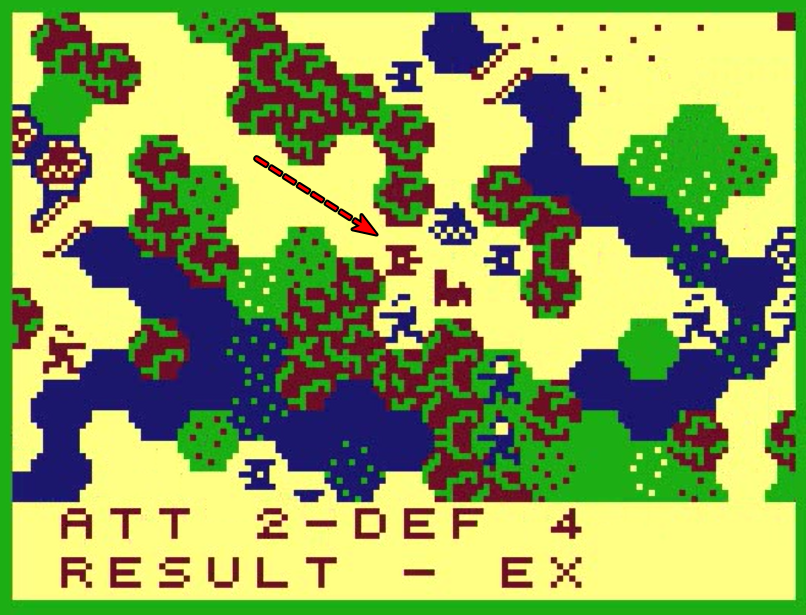
By turn 6, I have taken control of two more cities (by stationing a unit near there) and consolidated my hold on the centre by “[T]ransporting” [=teleporting] units from my capital to that central city I control. With 4 cities under my control vs 3, I receive one infantry every turn and my opponent – nothing.
It is time to move to the offensive: one heavy tank heads toward the poorly-defended South-Western city and, because I am feeling cheeky and even overconfident, I try to cross the river in the middle with armours to occupy the last city.
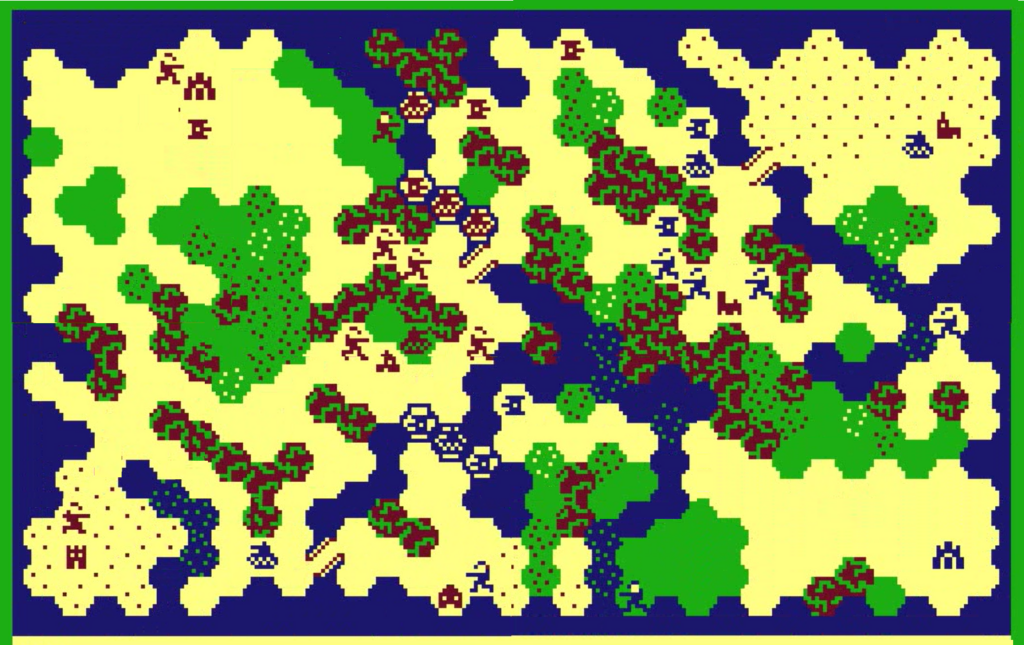
My ill-advised crossing is punished by the AI – units in the river fight at half-strength – but even here the AI is subpar as it only tries to kill my light tank even though it could follow up in the same turn with an attack on the heavy.
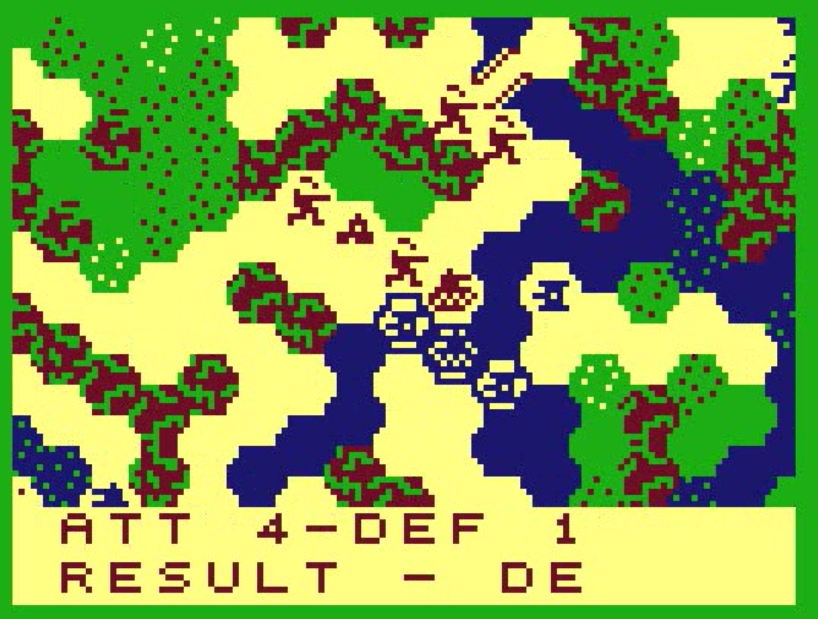
I abort my crossing the following turn and opt for a more careful approach. After taking the North-Western city and transporting some infantry to hold the position, I head for the enemy capital. At this point, I have +3 cities over the computer, giving me a new heavy tank every turn! I don’t really need them, as the computer keeps attacking at 1:1 ratio or worse, which means it has 1 chance out of 2 of losing its unit and 1 chance out of 6 of eliminating mine.
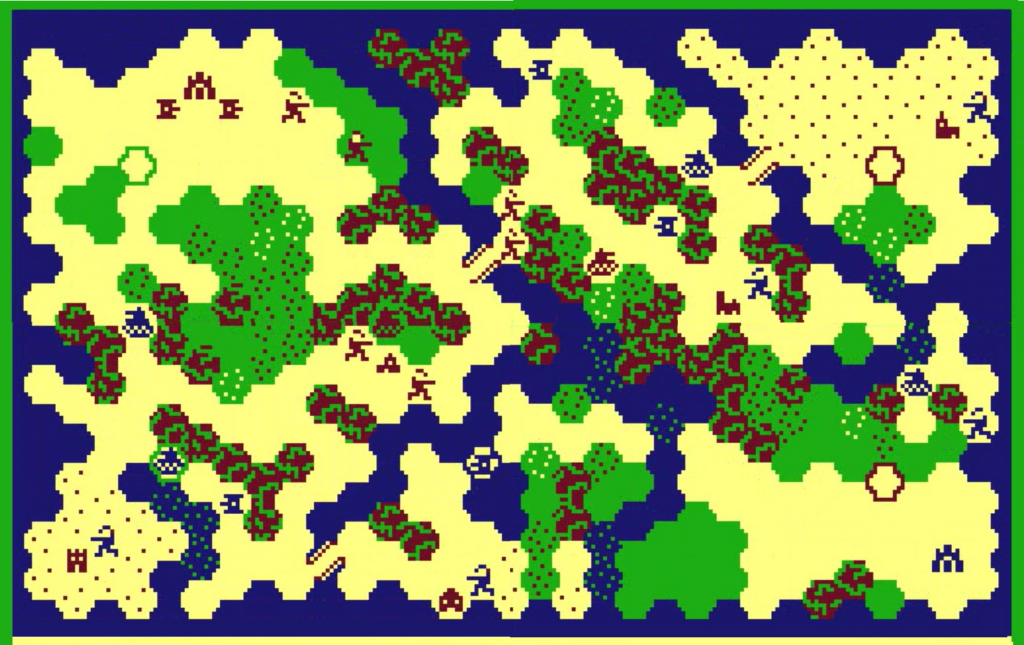
After securing the South-Western city, I dash North to finish the game as soon as poss…
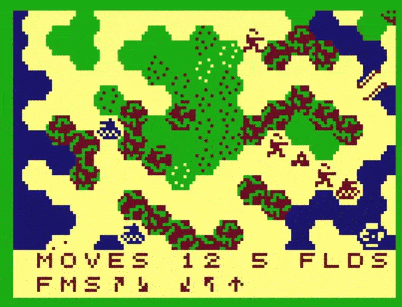
Uh! Mines! No more heavy tanks.
The infantry of each side can deploy up to 5 minefields (in total and lifetime, not “at the same time”). They have a good chance to destroy enemy tanks and some chance to destroy enemy infantry outright, but whether or not they succeed they are removed from the map.
I did not deploy any myself: while invisible, the AI knows where they are and avoids them perfectly… which actually is even better, as it allows you to create impassable walls. Even the AI’s own minefield creates all sorts of weird AI behaviour, particularly because the AI does not always put them in the best location. It is not impossible that the AI only sent one infantry in the bottom left corner because a minefield blocked the route of the rest of its army!
In any case, the loss of my heavy tank is only a delay. More troops come from two different directions, as I have decisively prevailed in the central area:
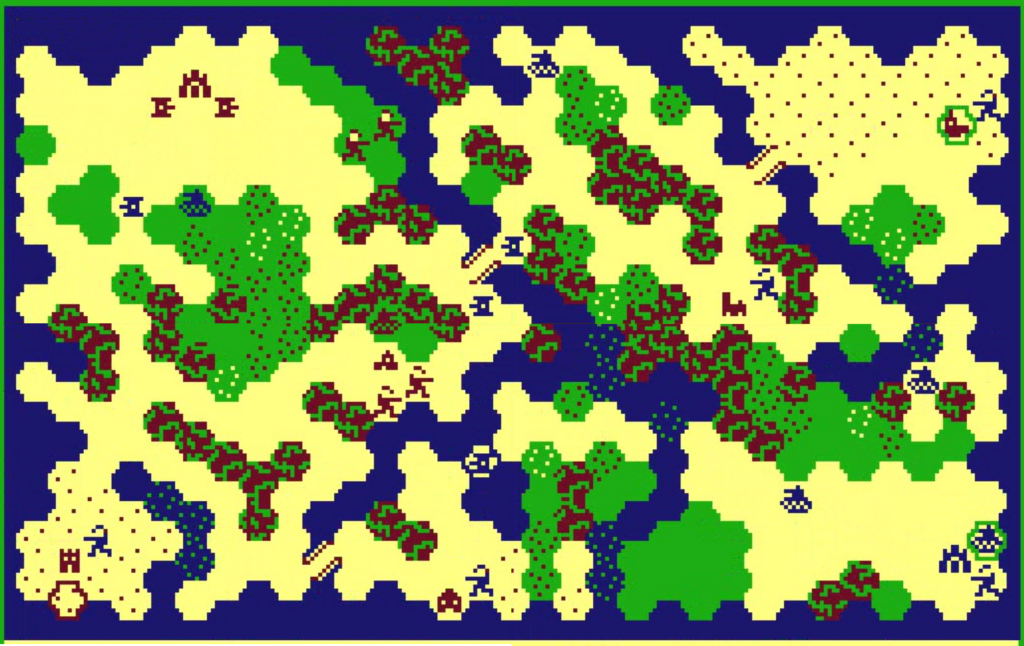
It is the final assault:
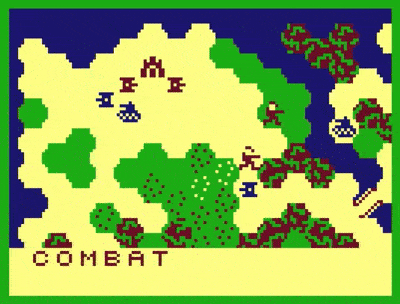
Finally, I occupy the enemy capital turn 12, earning an easy victory:
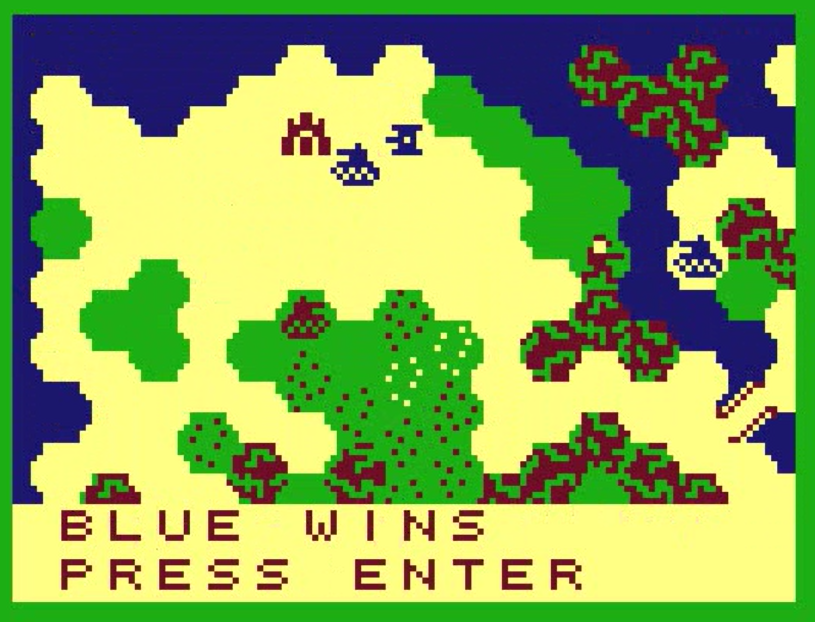
Ratings and Reviews
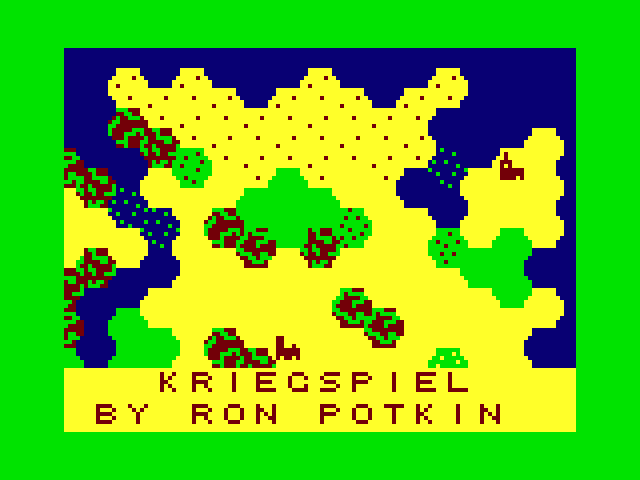
Kriegspiel by Ron Potkin, self-published and then published by Softside, US (TRS-80) and Beyond Software, UK (Dragon 32)
First release: 1980 for the initial TRS-80 release, 1983 for Dragon 32
Genre: Combined Arms Tactics
Average duration of a campaign : 40 minutes
Total time played: 2 hours
Complexity: Low (1/5)
Rating: One star
Ranking at the time of review: 47/147
Context – I have already given the context around Beyond Software and Ron Potkin’s games in my previous article. The original TRS-80 Kriegspiel (which I will call Kriegspiel I from now on) was the earliest of Ron Potkin’s (preserved) games, first published by the Software Exchange (a spin-off of the magazine Softside) in November 1979.

Kriegspiel I is quite different from the game I just played: the game was only one screen large, two player- only and made no distinction between light and heavy tank. Instead, the game included engineers, who could blow up mountains to open the way for the rest of the army. This could be necessary, as the map was randomly generated and could include a large number of mountains.

Still, a few traits would be preserved in later versions. In particular, combat was resolved the same way: enemy units in contact would stop their movement, and at the end of the turn combats would result according to a roll on a combat ratio table.
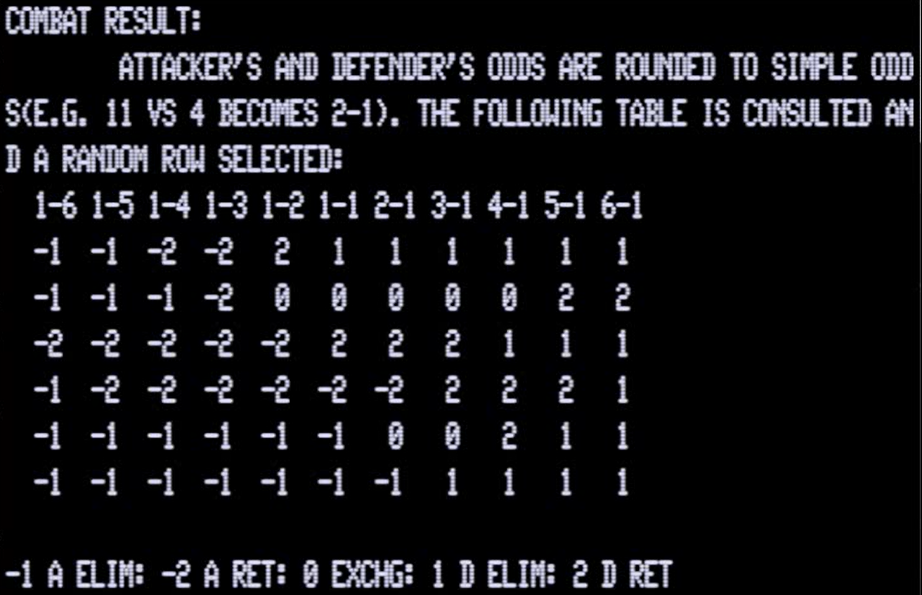
Kriegspiel I was probably considered a good game, as it was featured in the November 1980 issue of Softside (it even made the cover!). Potkin was presumably happy to publish his listing, as it allowed him to discuss the sequel Kriegspiel II he had just released. While still two-players-only, Kriegspiel II was extremely different from Kriegspiel I. To only name the most obvious differences:
- It featured a 31×16 map – same size as the one I played on – which also meant all units had received a boost in speed and a capacity to advance after combat
- The map featured 6 secondary cities, whose control allowed the recruitment of more units and fast transportation.
- The engineers had been dismissed, with the designer’s notes reckoning that the larger map had made their ability to unclog the board unnecessary,
- The infantry had learned to deploy minefields
- Tanks had been split between light and heavy tanks,
- The game had weather effects,
- All the units could attack at range 2, with up to 30% chance of destroying the opposing unit outright, but if it missed the target would automatically shoot back,
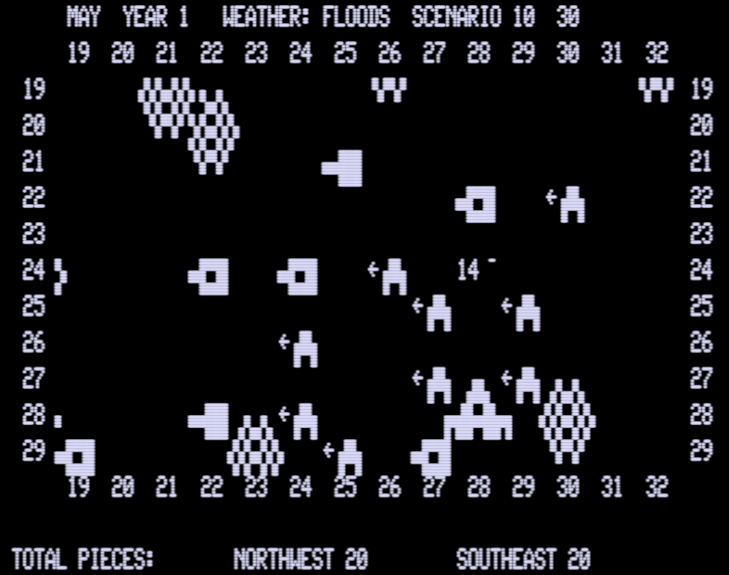
The Dragon 32 Kriegspiel is an almost direct port of Kriegspiel II with the addition of the solitaire mode and the removal of the ranged attacks – probably for the better – and also unfortunately the removal of map randomisation, replaced with 3 preset maps – I played with the “mountain” one.
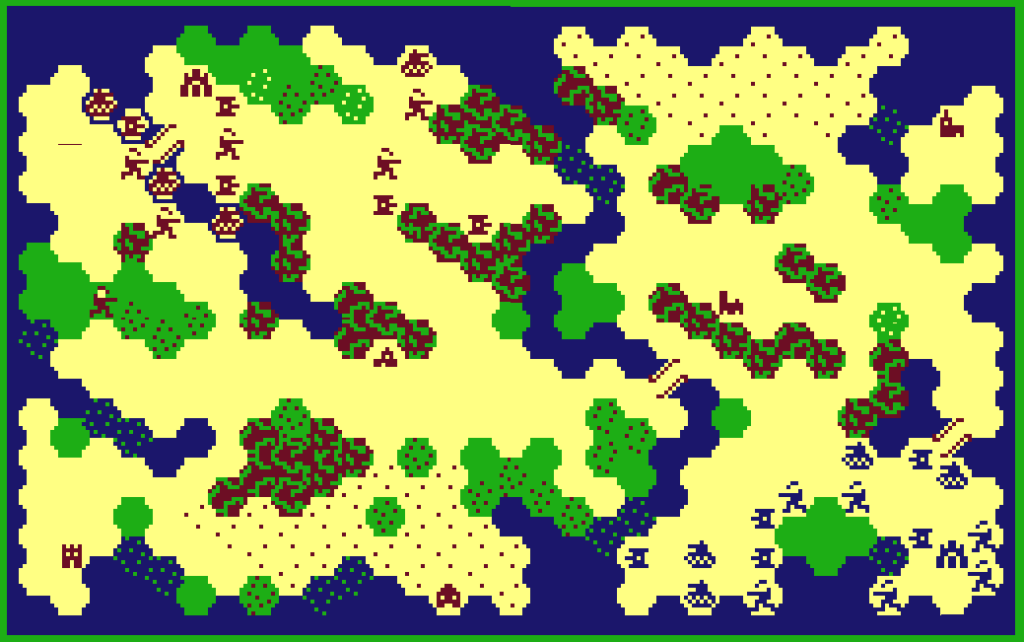
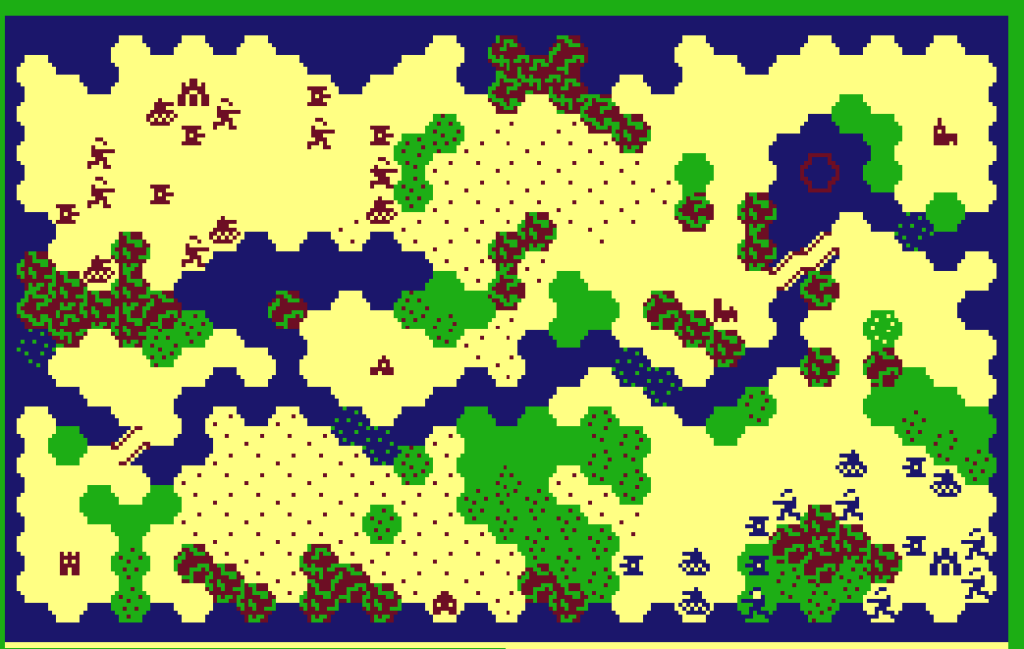
Kriegspiel must have been developed immediately after Up Periscope: it uses the same engine and interface but adds some quality-of-life features like keyboard hotkeys and a “move-to-next-unit” button, making it slightly better to play.
Traits – I have little to add that I haven’t showcased in the AAR. Kriegspiel is intuitive to play (“this heavy tank is probably going to beat those two infantry“), even though the combination of “no hp system” and “combat result table” makes it very random: even at 2-1 ratio you have 50% chance of losing your units through either direct elimination or exchange.
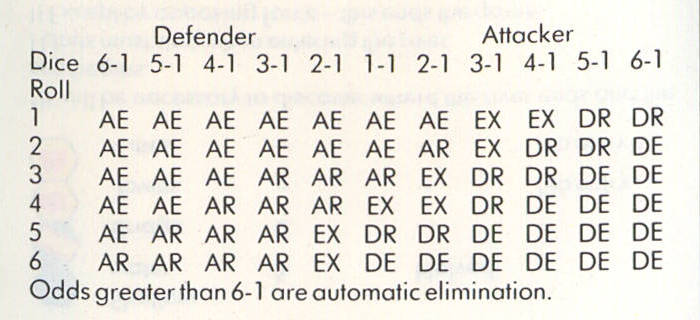
The game’s main issue is the weakness of the AI: it does not attempt to overwhelm your forces, it barely tries to occupy cities and – worse – it does not know how to retreat so any retreat result on the CRT is automatically converted into elimination! With no starting bonus and only one “cheat” (seeing your minefields), it is a push-over you’ll crush in your first game, making the game duller than its ruleset deserves. At least in Up Periscope when the enemy was doing something stupid it was doing something stupid underwater and away from your eyes.
Did I make interesting decisions? With the AI sending its troops on suicide missions, I don’t think any decision I took mattered.
Final Rating: One star. The design hits all the marks, the UI is great for the era and makes me reassess the capabilities of the Dragon 32. Alas, while it must have been great in multiplayer, without a minimally capable AI to fight it feels pointless and shallow in solitaire.
I haven’t found any significant contemporary review of Kriegspiel, though there were a few snippets here and there announcing its release. Kriegspiel was Potkin’s last commercial game. In the US, Softline had published early in January his Turret and Track (a turn-based tank combat game on TRS-80, alas 2-players only) and in 1984 Computer and Video Games published what turned out to be his last known game: Beacon Star Wars, another strategy game for Dragon 32 and Spectrum similar to Kriegspiel, but again two players only.
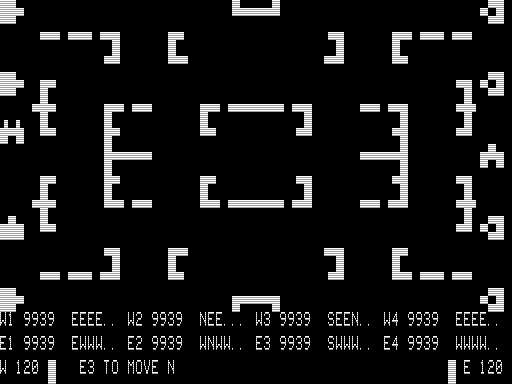
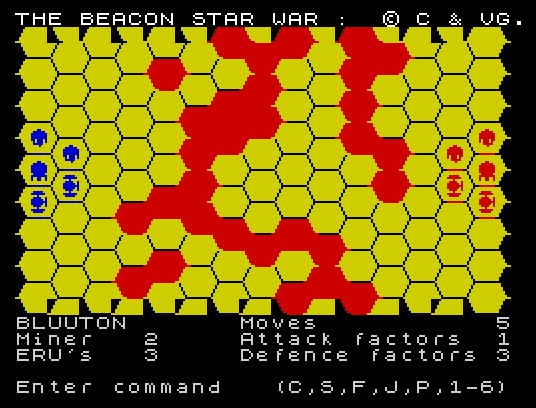
This Ron Potkin/Dragon 32 detour was nice, and I have some hope that I may soon finally finish Breakthrough in the Ardennes, which has been clogging my schedule for almost two months now. As you’ll see, there is something obsessively frustrating to me in that game.